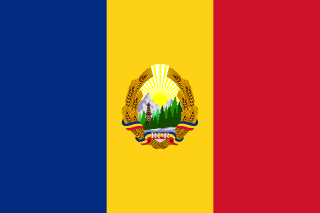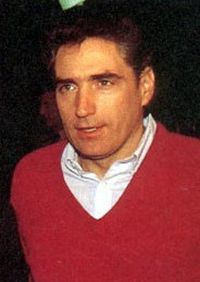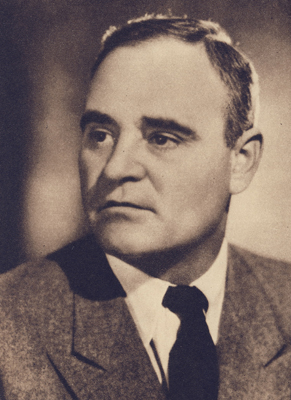
Șerban Vodă Cemetery is the largest and most famous cemetery in Bucharest, Romania.

Romania competed at the 1952 Summer Olympics in Helsinki, Finland. The nation returned to the Olympic Games after having missed the 1948 Summer Olympics. 114 competitors, 103 men and 11 women, took part in 67 events in 15 sports.

In 2006, Romanian Television conducted a vote to determine whom the general public considered the 100 Greatest Romanians of all time, in a version of the British TV show 100 Greatest Britons. The resulting series, Great Romanians, included individual programmes on the top ten, with viewers having further opportunities to vote after each programme. It concluded with a debate. On 21 October, TVR announced that the "greatest Romanian of all time" according to the voting was Stephen the Great.

The Năstase Cabinet was a cabinet of ministers led by Adrian Năstase that governed Romania from 28 December 2000 to 29 December 2004 during the third term of President Ion Iliescu. It was a minority cabinet formed by the winner of the 2000 parliamentary elections, PDSR, which included also members of other parties, non-parliamentary parties. It was supported by a legislative coalition which included PNL and UDMR.
The Ciorbea Cabinet was the 112th cabinet of Romania, formed 12 December 1996 and dissolved 30 March 1998, with Victor Ciorbea as head of government. It was a coalition cabinet formed between the winner of the elections, CDR, USD, and UDMR.

The Văcăroiu Cabinet was the 111th cabinet of Romania between 1992 and 1996, led by Nicolae Văcăroiu. After the 1992 general elections, when FDSN obtained 27.75% of the votes in the Chamber of Deputies, and 28.31% in the Senate, the reelected President, Ion Iliescu, nominated in November 1992 Nicolae Văcăroiu as Prime Minister of a minority cabinet formed by FDSN.

The Stolojan Cabinet was the Cabinet of the Government of Romania between 16 October 1991 and 19 November 1992. It was the fourth post-communist cabinet. The Prime Minister was Theodor Stolojan, a former financial bureaucrat during communism. Stolojan was an independent minister of finance in the Roman cabinet, dominated by the FSN. The Stolojan Cabinet was a transition cabinet, in charge with organizing the elections, and included FSN members and members from other parties national liberals, ecologists, agrarians, and independents.

The third cabinet of prime minister of Romania Petre Roman took office from 30 April 1991 up until 16 October 1991. It was the 109th overall cabinet of Romania and ended three weeks after the September 1991 Mineriad which occurred in Bucharest. It was a single-party majority cabinet, plus independents.

The Second Roman cabinet was the government of Romania from 28 June 1990 through 30 April 1991, led by Prime Minister Petre Roman. It was a single-party majority cabinet; it was formed only by the party that won the elections with 66% of the vote, the National Salvation Front. The cabinet included a few independents.

The second cabinet of Gheorghe Gheorghiu-Dej was the government of Romania from 28 January 1953 to 4 October 1955.

The Romanian pavilion houses Romania's national representation during the Venice Biennale arts festivals.
The second cabinet of Constantin Dăscălescu was the government of Romania from March 29, 1985, to December 22, 1989. It resigned in the aftermath of the Romanian Revolution. Four days later, it was succeeded by the First Roman cabinet.
This page is based on this
Wikipedia article Text is available under the
CC BY-SA 4.0 license; additional terms may apply.
Images, videos and audio are available under their respective licenses.









